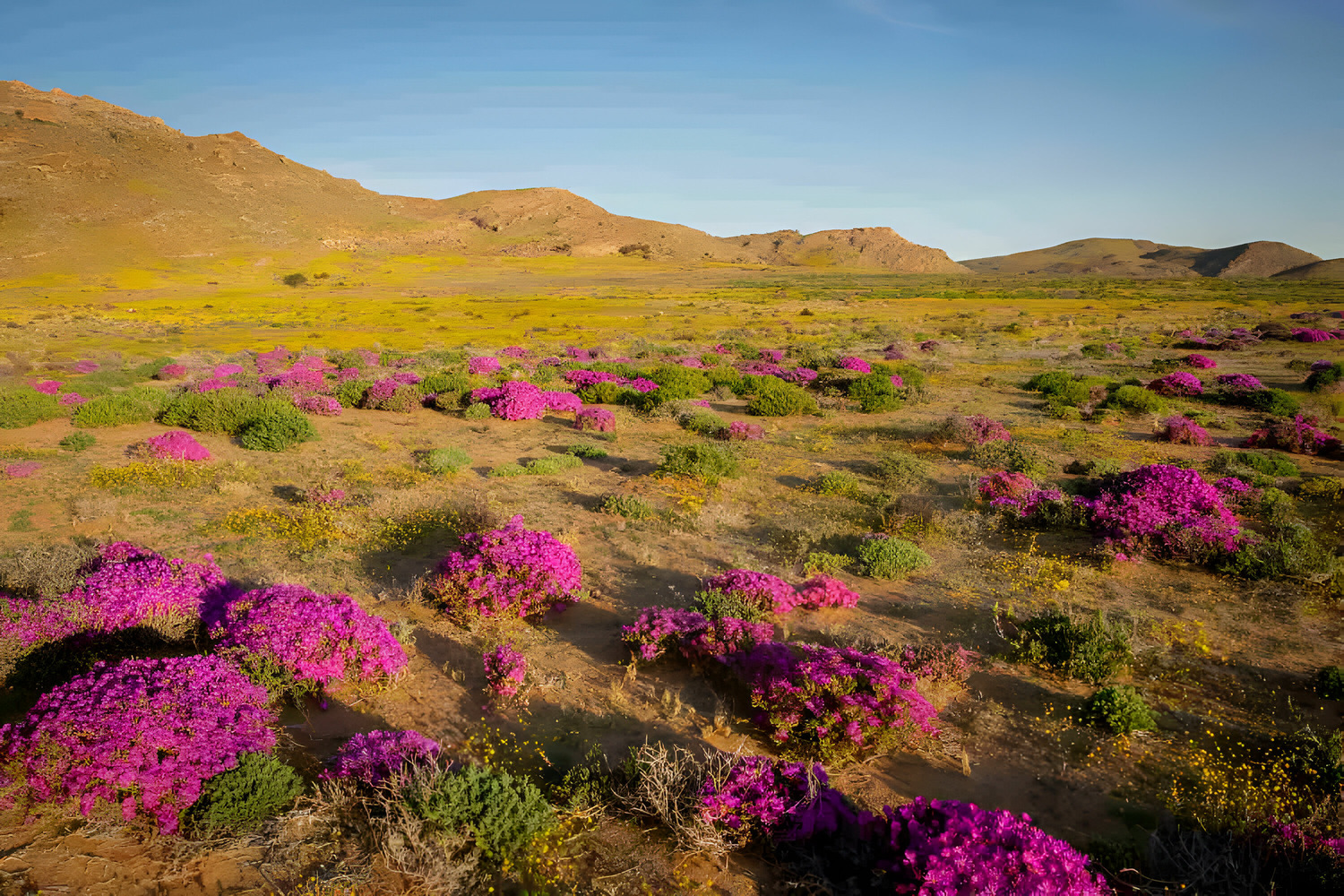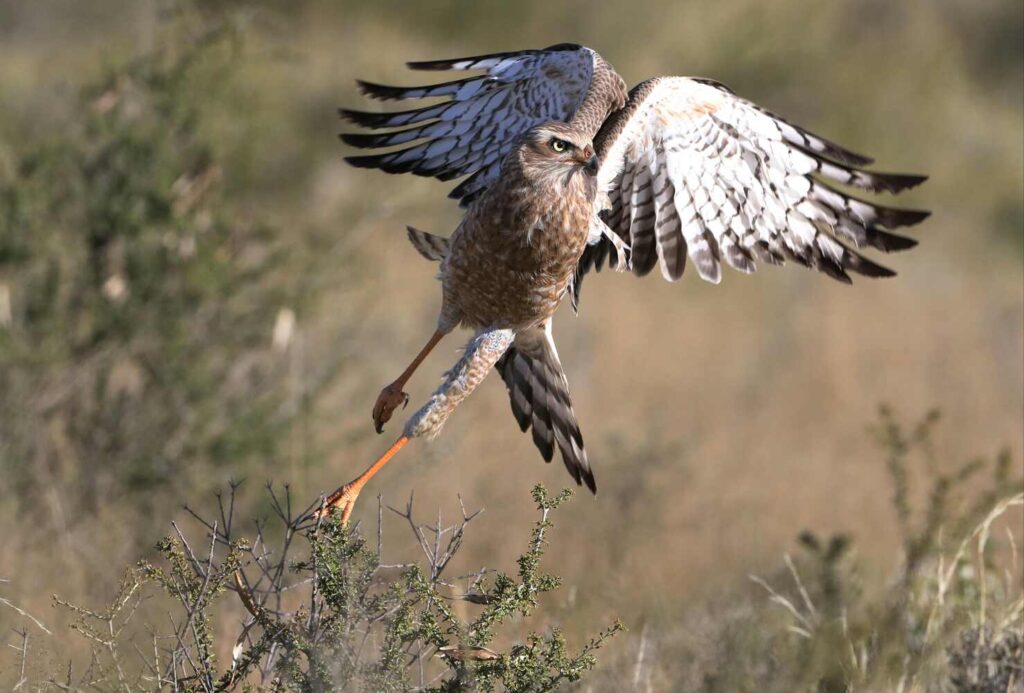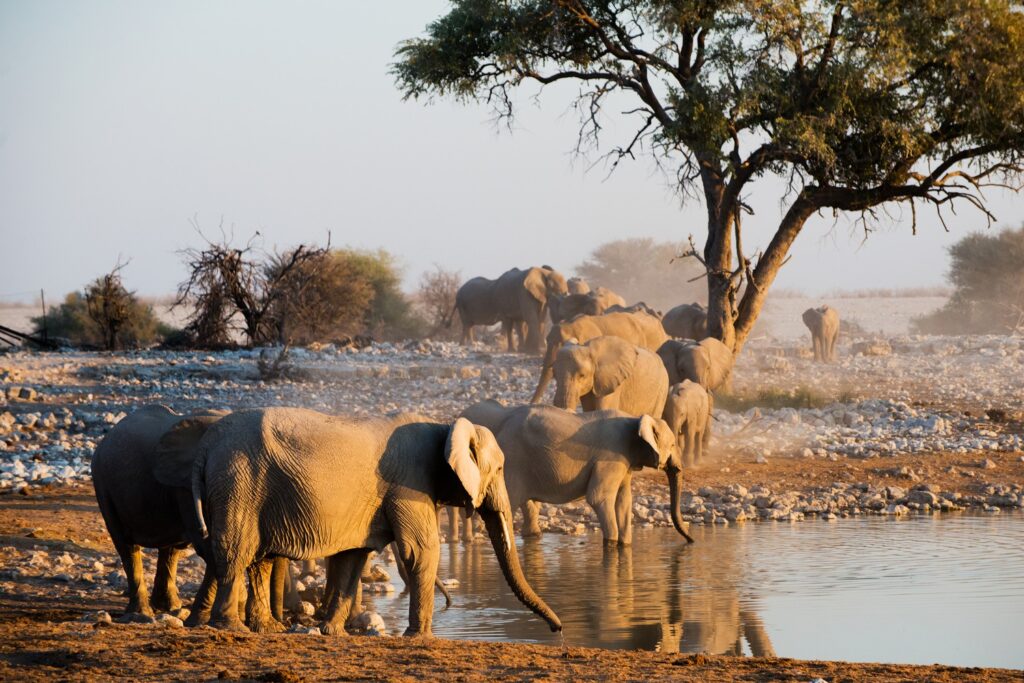Desert in Bloom: Capturing the Kalahari’s Spring Wildlife on Camera
Spring brings a remarkable transformation to the Kalahari Desert. Seasonal rains turn the arid landscape into a vibrant palette of green grasses and flowering shrubs, attracting wildlife and creating dramatic photographic opportunities. Understanding these seasonal changes helps photographers anticipate where animals are likely to appear.
Light and Composition
Early mornings and late afternoons offer the softest, most flattering light. Red dunes glow warmly during these hours, and long shadows add depth to your compositions. Wide-angle lenses capture expansive views, while careful framing highlights the contrast between vegetation and the sandy terrain.
Bird Photography
Spring is a prime time for birdwatching. Raptors soar across open skies, while smaller species, including sociable weavers, build intricate nests. A telephoto lens and patience are essential for capturing sharp, detailed images without disturbing the birds.
Wildlife Hotspots
Grazing animals such as springbok, gemsbok, and kudu are drawn to areas rich in fresh growth. Predators follow, providing chances for dynamic action shots. Observing movement patterns near water sources or natural feeding areas increases the likelihood of capturing compelling wildlife interactions.
Waterholes and Interaction
Temporary pans and waterholes become central hubs for desert life. Photographers can document multiple species interacting, from drinking and feeding to predator-prey behavior, all within a concentrated area. These spots allow for diverse storytelling through images.
Close-Up Opportunities
The desert in bloom creates opportunities for macro photography. Bright wildflowers and emerging insects offer contrast against the sandy backdrop. Close-up shots reveal textures and details often missed at first glance, adding depth and interest to your portfolio.
Capturing the Season
Spring in the Kalahari is a spectacular time for photographers. After seasonal rains, the desert bursts with color as wildflowers bloom and the normally sparse landscape comes alive. Animals are more active, making it the perfect opportunity to capture both vibrant scenery and dynamic wildlife in their natural habitat. This is your chance to witness the desert in bloom and see how life returns to the arid landscape.



